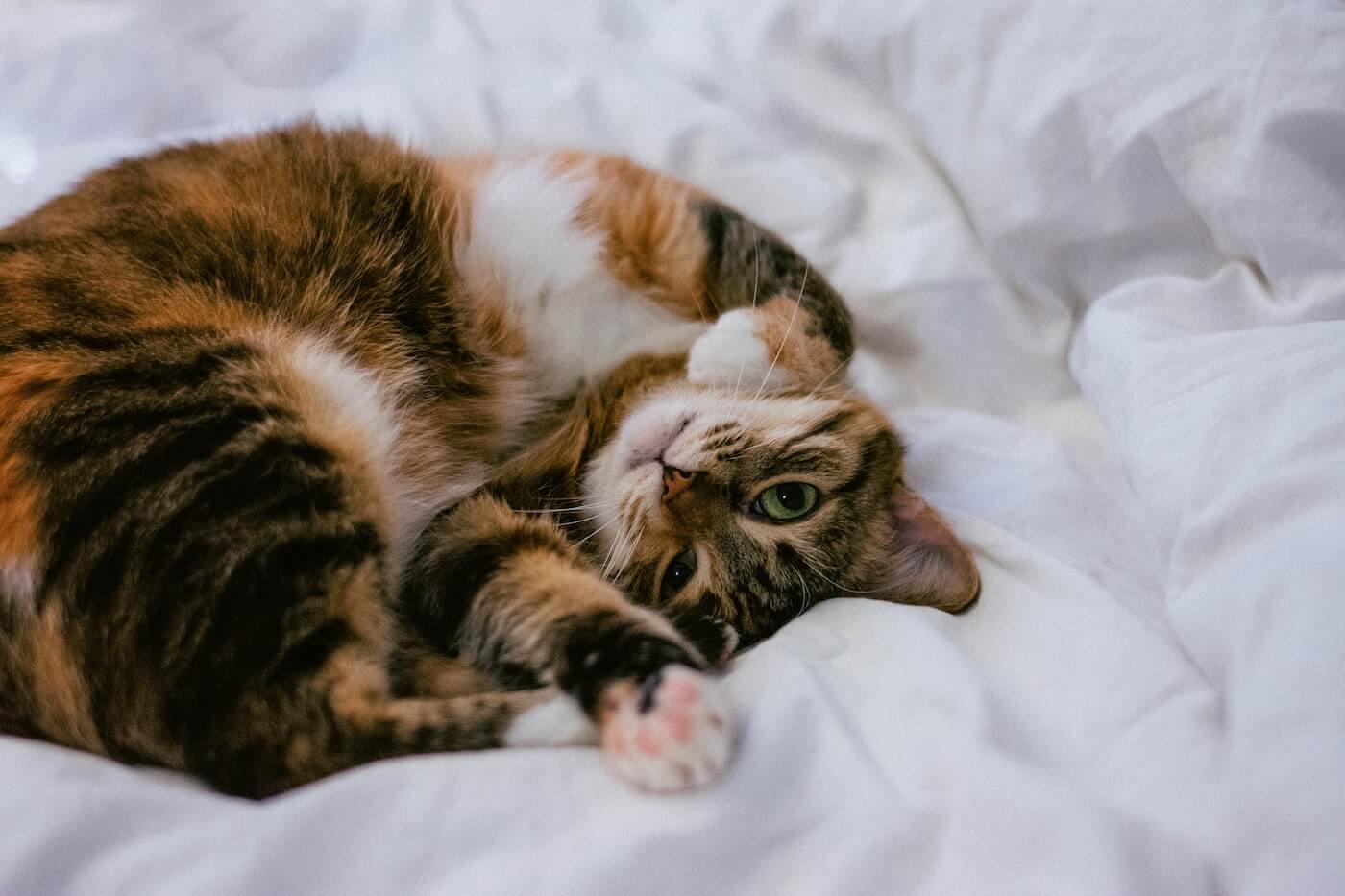During the coronavirus crisis many families are adding furry friends to their homes. I grew up with dogs and I am a self-proclaimed “dog person.” My boyfriend grew up with both cats and dogs and missed having a feline friend. We decided to adopt an adorable grey cat with yellow green eyes and a huge personality. Since it is kitten season, many shelters in areas with fewer spay and neuter regulation are overrun with cats. Adopting a cat during Covid-19 is a great way to help save animals that find themselves in high-kill shelters, like our new guy Grange.
As a new cat parent, I am learning new things about him every day. There are a lot of differences between cats and dogs. I will share the top things I’ve learned from my new rescue cat. Of course, all cats are individuals and will have unique personalities. Some of the traits listed below might not apply to your cat.
Some cats’ tails shake like a rattlesnake
On our first day with Grange, I was caught off guard by his upright tail which vibrated rapidly like a rattlesnake. From my experience with dogs, I knew tails were an important part of expression, but I had never seen a cat move their tail like that before.
Your cat will display many different tail positions and each can reflect a particular mood. It’s helpful to make a mental note of your cats’ tail in different situations so you can better judge how he or she is feeling. Some different tail positions
include:
- Rattlesnake Tail:
If you’re not well-acquainted with cats, this tail action might scare you at first, but don’t be alarmed. When your cat’s tail sticks straight in the air and the tip top of it quivers rapidly, it means he’s happy to see you. Some cats will do this when you come home from work, others might do it every time you enter a room they’re in, and some might not do it at all. Typically, rattlesnake tail will be accompanied by some head butts as your little friend asks for pets and head rubs. - Low, Swishing Tail or Thumping Tail:
Time to take a step back and give your cat some space. Don’t confuse this motion with a dog’s tail wagging. A low, flicking tail means your cat wants some space. It’s a warning that he isn’t interested in being pet and needs some time alone. - Pointed Back Tail:
When your cat’s tail looks almost as though it defies gravity as it points straight back parallel to the ground, he could be on the prowl. Cats are natural hunters, and they love to stalk prey, which in your home might be a bed skirt rustling in the wind, his favorite feather toy or even a random sock on the ground. - Slow Swishing Tail:
Your cat might be focused on something like food or a toy. If his eyes are wide, and his body is hunched he might be getting ready to pounce. - Puffed Out Tail:
Back away now. This cat is not happy and you should leave immediately. He will puff out his tail to try to look bigger and scarier to predators. If he’s doing this around you it’s a warning that if you don’t leave now he will attack.
Check out even more common tail positions here.

Photo: Alexander London

Photo: Tolga Ahmetler
When a cat rubs his cheek on you and objects around the house, he’s marking his territory
You know how some dogs will pee a million times on walks to mark their territory? Cats do the same, although fortunately urinating on objects is more common in those that are non-spayed. Cats also mark their territory using scent glands in their cheeks and head. If your cat “bunts” you it’s his way of saying “hello” and showing his affection.

Photo: Tucker Good
Cats are More Active at Night
If you’ve never lived with a cat before you might just think all your friend’s cats sleep A LOT. This is partially true. Cats spend an average of 15 hours a day sleeping. They are also nocturnal, which means when you’re ready for bed, your cat might be ready for play time. If you live in a small apartment, his nighttime pouncing and snacks could affect your sleep. However, there are many ways to encourage your cat to sleep at night, although he still may wake up earlier than you.
- Keep a Consistent Schedule
Discourage your cat’s nightly romp by feeding on a routine schedule. Keep your own pre-sleep activities on a regular schedule as well. If you brush your teeth at 10pm each night, your cat will begin to associate that time with sleep. - Play During the Day
Just like with toddlers, a good amount of play time during the day can help keep your cat awake and stimulated. Puzzle games are a great way to keep your cat busy when you can’t play. We love the Cat Amazing puzzle boxes. They are cardboard boxes with holes in them. You can hide food inside it and your cat will use his hunting skills to get the food out. It’s the perfect toy for foodies. Try incorporating play time right before dinner so your cat will be tired out when you hit the pillow. This will also reinforce his natural, hunt, catch, kill instincts. - Move Toys and Food to a Different Room
If space permits, you can limit nighttime disturbances by moving any noisy items like cat scratches or dry food to a room other than the one you sleep in. This can help provide some peace and quiet while you snooze. - Shut the Door
If all else fails, you can shut the door to your room. Just be aware that cats don’t like closed doors—they are a barrier to patrolling their “territory”—so your cat might scratch at the door to get inside.
Cat Zoomies are a Thing
Think only young dogs are prone to running around the house randomly like they just drank 10 red bulls? Think again. Cats get zoomies too. Don’t be alarmed if your cat suddenly has huge pupils and enters his pounce stance, all while staring intently at nothing. If you are too busy to play, your cat will chase imaginary prey. Or they might find random objects around the house to “hunt” like a sock on the ground.

Photo: Sebastian Latorre
Boxes are so Fun
Getting some new cat toys in the mail? Don’t be surprised if your kitty loves the cardboard box they came in more than the actual toys. Cats love tight spaces where they feel secure. You can even flip the box upside down for an extra fun cat hiding spot.

Photo: Luku Muffin
Some Cats are Grazers
Some cats will go crazy for their food, others will eat a little here and there. It’s normal for your cat to leave food behind as long as they do eat the food eventually. Do watch out for food and water bowls that are too tall and narrow. These can hurt you kitty’s sensitive whiskers, and make eating all their food difficult. You can also try an alternative feeding method in which you fill specially designed toys with food. This will activate your cat’s natural hunting instincts and provide them with a more enriched feeding process.
Treat Bites Seriously
Studies show that up to 50% of cat bites become infected. If a bite draws blood, don’t ignore it no matter how small it may seem. When bitten, the bacteria in your cat’s mouth is penetrated deep into your tissue. Due to the narrowness of cats’ large, fang-like canine teeth, bites are difficult to thoroughly clean. Always contact your doctor if you are bitten and it breaks the skin. Read more about cat bites in our last blog post here.

Photo: Molly Wagener
Most Cats Don’t Love Water
If you are used to your dog lapping up slurps of water without encouragement, you may notice that your new cat takes infrequent tiny sips of water. Of course some cats will naturally drink the appropriate amount of water. If you notice that your feline is not drinking enough water, you can make a gravy or broth with Totally Wags Collagen for Cats and add it to their food. It’s a clever way to encourage them to up their liquid intake.

Photo: Kazuky Akayashi
Belly Rub with Caution
Cats are protective of their internal organs. Unlike a dog, cats generally do not like belly rubs. Although they may roll over and expose their belly to you, they’re likely not asking for pets. Only pet a cat on its stomach if you know the cat well and pay close attention to his body language while you do so. Cats will attack prey on their backs, using their claws and teeth to kill their catch. Be prepared for a nibble or swat if you decide to pet your cat’s belly.

Photo: Anton Lochov
Cats Love to Climb
If you’re used to your dogs staying on the ground level, get ready for a whole new experience. Cats like to seek high places and perches where they can survey their territory from above. This means if you have breakable items like glassware displayed on a shelf, be prepared for some breakage.
Before you bring your new cat home, look around your house while channeling your inner feline. Cat proof any tall shelves or cabinets by removing items that could break or endanger your cat. You can discourage climbing on tall furniture by providing your cat with places to safely climb like a cat tree or shelf. Also, pay attention to the nooks and crannies of your home. Cats will explore all those tight areas that haven’t been cleaned in ages, like behind the couch or under your bed.
Cats Love Windows
Squirrel watching isn’t just an activity for the dogs. Cats love to look out the window and see what’s happening outside. You can add some excitement to their window-watching by purchasing a bird feeder that attaches to the outside of your window.
Cats Don’t Respond to Commands the Same Way as Dogs
While some cats do respond to calling their names, not all will come on command. You can teach some food motivated cats tricks like “sit” and “paw,” but don’t be surprised if your cat ignores your commands. Instead, try to encourage good behavior with positive reinforcement like pets and treats. Discourage bad behavior by redirecting your cats attention elsewhere.
Scratching is Important
Sharp claws are one of cats' most important defensive tools. Cats will routinely sharpen their claws by clawing at surfaces. Unfortunately, this could mean your new couch or table is prime scratching territory. Discourage this behavior by providing your cat with a scratching post or cardboard scratcher. You can help direct him to scratch these places by pouring catnip on them. If scratching furniture becomes an issue, placing sticky tape on your cat’s favorite spots can help keep him away.

Photo: Chris King
Cats Are Finicky
We all know some dogs will eat just about anything, including the cardboard box protecting the Girl Scout cookies. Cats are a whole different animal when it comes to food. Cats are protein loving carnivores; carbs are not really their thing. Up your cat’s protein intake with Totally Wags Collagen for Cats. Each serving contains 3.5 grams of protein and 18 amino acids for skin, coat and joint health.
What new things have you learned since your cat joined your family? Share your cat tips in the comments below.

Molly Wagener
Contributor

